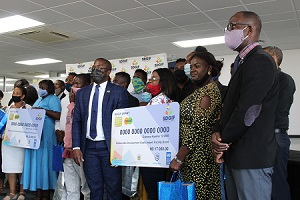
Non-forest trees outnumber those in formally classified forests

By Freeman Ya Ngulu.
Using images from a single year from the Planetscope nanosatellite constellation, which delivers globally very high-resolution daily imagery, to map both forest and non-forest tree cover for continental Africa reveals that more than one quarter of Africa’s tree cover is found outside areas previously classified as forest.
The Planetscope imagery was partly from a departmental research license and partly from Norway’s International Climate and Forest Initiative (NICFI) satellite data Level 2 programme.
“Our prototype map of 2019 demonstrates that a precise assessment of all tree-based ecosystems is possible at continental scale, and reveals that 29% of tree cover is found outside areas previously classified as tree cover in state-of-the-art maps, such as in croplands and grassland.” Florian Reiner from the Department of Geosciences and Natural Resource Management, University of Copenhagen, says of the research..
He adds that such accurate mapping of tree cover down to the level of individual trees consistent among countries has the potential to redefine land use impacts in non-forest landscapes, move beyond the need for forest definitions, and build the basis for natural climate solutions and tree-related studies.
The distribution of trees across different climatic zones and tree cover by annual rainfall was summed.
A previously published and widely used global tree cover map was added for comparison purposes. It was found that, at continental scale, the PlanetScope tree cover matches the global map for forests and even for areas of 10–25% tree cover, especially in higher rainfall areas, but the global map completely misses tree cover below 10%, which is the dominant form of tree cover in low rainfall areas. Across Africa, the researchers show that 15.8% of tree cover is located in areas with less than 25% canopy cover, and 6.0% of the tree cover is in areas with less than 10% canopy cover.
A pact from COP26, to which more than 100 countries are signatory, stresses the importance of halting and reversing global deforestation by 2030. In order to achieve success, actions to halt deforestation and forest degradation require the direct support from high-quality monitoring systems that deliver measurement, reporting, and verification (MRV) of forest area and change consistently and comparably among countries
However, tree losses do not only occur in dense high-carbon forests, but also in landscapes of scattered trees that do not form closed-canopy forests. Conversely, tree gains in these non-forest landscapes are often not perceived positively as they can contribute to destabilizing open ecosystems.
The researchers compared the total tree cover from non-forest areas (here defined as <25% tree cover) against the total tree cover for 45 African countries. Even though trees in non-forest areas contribute only a minor part to the total tree cover at continental scale at national level trees outside forests constitute more than 50% of all tree cover in nine countries, namely Botswana, Burkina Faso, Eritrea, Libya, Mali, Namibia, Niger, Mauritania, and Sudan. This implies that previous moderate-resolution tree cover maps are of little use to quantify national woody resources for these countries.











































